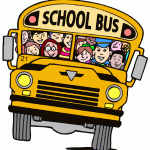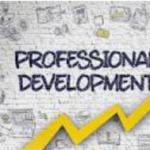It was week 5 of the school year. In my work with beginning teachers, relationships were growing, trends were starting to emerge, and similar questions were beginning to become commonly asked. This year, however, the most common theme of the questions surprised me: Professional Development.
Not classroom management, not technology, not relationship building, or district procedures, but professional development opportunities. My teachers grab a pen or pencil and start to take notes, hoping what I have to say will give them the answers they are looking for. Teachers have this innate sense of lifelong learning. Teachers, by and large, want to be better, know more, and do what is best for their students. Many see professional development opportunities as a pathway to do this. The questions, all quite valid, have variations, but truly fall under the umbrella of: “What classes should I take? When and how do I say ‘enough’?”
What classes should I take?
There are so many options out there: the opportunities offered by the district, state government, local organizations, micro-credentialing programs, and that’s not even to mention professional learning networks and other online experts. It, quite simply, is overwhelming. Rather than focusing on the classes themselves, I question my teachers and challenge them to focus on the topics instead: What are you passionate about? What do you think would most impact you? Your students? Your school community? Of those three, which is the most in need of attention? What’s the end goal for you?
It’s all about prioritizing a focus. For example, when I was a girls’ basketball coach, I was required to complete an online class on how to coach with a positive perspective. I felt I had mastered this concept already. But as I clicked the next arrow to navigate through the mandated class, I was listening and paying attention to the audiobook of Tony Dungy’s “Quiet Strength: The Principles, Practices, and Priorities of a Winning Life.” My goal for that coaching season was to be balanced in my coaching and in life outside of the gym. There’s no way a mandated class was going to help me achieve that goal, so I had to prioritize and search out my own development, even if there was no certificate at the end or hours to record.
When and how do I say ‘enough’?
Any kind of professional development should energize and challenge us as individuals and as educators. The energize part is easy for us to feel and see: We are excited to begin, time passes quickly, and we can see an immediate impact personally and within the walls of our classroom. The challenge part is a bit more difficult to discern: we are forced to deal with discomfort, to work through previously-held beliefs/structures and set aside our biases in order to do what is best for teaching and learning.
Sometimes, instead of working through the discomfiture, we put up walls, roll our eyes, scroll our feeds on our phones, check email, listen to an audiobook ;), and declare the professional development opportunity to be useless. And, in all honesty, sometimes it does feel like it was useless.
But that’s when we need to dig deeper to push through the challenge and work through the why. In that audiobook moment, I didn’t dig deep. Was it because I didn’t get a choice, like the online coaching course? Was it because I have too much going on? Was it because I had to leave my classroom and am nervous about what I’ll return to? Was it because the opportunity was not what I thought it was going to be? It’s easy to roll our eyes and move on, but we have to stop and sit in the discomfort to really determine the reason behind it. If all we do is roll our eyes and feel overwhelmed, we’ve hit that ‘enough’ point and need to take a step back and reevaluate our priorities.
We get out what we put in.










Comments 1
Hello!
I am literally writing about this same topic! Professional Development seems to be on everyone’s minds now. Thank you for writing this.